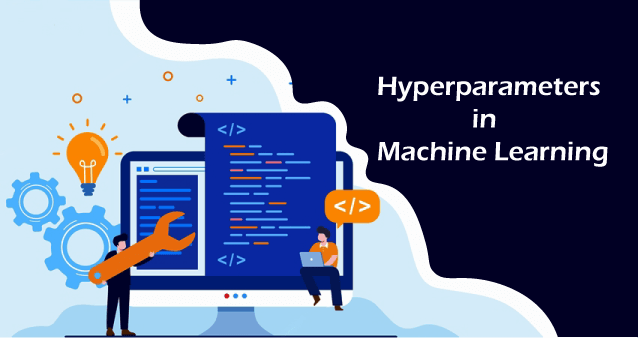
Optimizing Machine Learning Models: A Deep Dive into Hyperparameter Tuning Techniques
Last Updated on September 19, 2024 by Editorial Team
Author(s): MD TAHSEEN EQUBAL
Originally published on Towards AI.
Grid Search, Random Search and Bayesian Optimization

Introduction to Hyperparameters
Hyperparameters are the external parameters of a machine learning model that are not learned from the data. Instead, they are set before the training process begins and play a crucial role in determining the model’s performance. Common hyperparameters include learning rate, number of trees in random forests, and regularization strength in linear models.
Why Do We Use Hyperparameter Tuning?
Hyperparameter tuning is essential because:
- Optimizes Model Performance: Tuning helps in finding the best set of hyperparameters that improve the model’s predictive accuracy.
- Prevents Overfitting/Underfitting: Proper tuning can balance the trade-off between bias and variance.
- Enhances Generalization: Models with well-tuned hyperparameters generalize better on unseen data.
Real Use Case
Consider a company using a machine learning model to predict customer churn. By carefully tuning the hyperparameters of their model, they can achieve higher prediction accuracy, allowing them to identify customers at risk of leaving with greater precision, ultimately improving retention strategies.
Hyperparameters in Popular Algorithms

Hyperparameter Tunning Popular Technique

Overview
For each algorithm, I will follow these steps in the article:
- Define
- Mathematical Equation
- Advantages
- Disadvantages
- Example
- Python Implementation
- Diagram
1. Grid Search CV
Definition: Grid Search Cross-Validation is an exhaustive search method where a model is trained and validated for every possible combination of hyperparameters in a specified grid.
Mathematical Equation:

- Caption: Equation for Grid Search CV where M is the model, H is the set of hyperparameters, and K is the number of folds in cross-validation.
Advantages:
- Exhaustive and thorough search.
- Easy to implement and parallelize.
Disadvantages:
- Computationally expensive.
- Time-consuming, especially with large datasets or many hyperparameters.
Example:
- If you’re using a Decision Tree and want to find the best max_depth and min_samples_split, Grid Search CV would evaluate every combination of these hyperparameters.
Python Implementation:
from sklearn.model_selection import GridSearchCV
from sklearn.tree import DecisionTreeClassifier
param_grid = {
'max_depth': [3, 5, 7],
'min_samples_split': [2, 5, 10]
}
grid_search = GridSearchCV(DecisionTreeClassifier(), param_grid, cv=5)
grid_search.fit(X_train, y_train)
best_params = grid_search.best_params_
2. Random Search CV
Definition: Random Search Cross-Validation is a randomized search method where a model is trained and validated for a random selection of hyperparameter combinations.
Mathematical Equation:

- Caption: Equation for Random Search CV where M is the model, D is the distribution of hyperparameters, and K is the number of folds in cross-validation.
Advantages:
- Less computationally expensive than Grid Search.
- Can still find good results with fewer evaluations.
Disadvantages:
- May miss the optimal hyperparameter combination.
- Results can vary depending on the random seed.
Example:
- Instead of evaluating all possible combinations for max_depth and min_samples_split, Random Search randomly selects combinations and evaluates those.
Python Implementation:
from sklearn.model_selection import RandomizedSearchCV
from sklearn.tree import DecisionTreeClassifier
param_dist = {
'max_depth': [3, 5, 7],
'min_samples_split': [2, 5, 10]
}
random_search = RandomizedSearchCV(DecisionTreeClassifier(), param_dist, n_iter=10, cv=5)
random_search.fit(X_train, y_train)
best_params = random_search.best_params_
3. Bayesian Optimization
Definition: Bayesian Optimization is a probabilistic model-based optimization method that uses past evaluation results to predict the best set of hyperparameters.
Mathematical Equation:

- Caption: Equation for Bayesian Optimization where fff is the objective function, p is the hyperparameter set, E(f(p))E(f(p))E(f(p)) is the expected improvement, and κ\kappaκ controls the exploration-exploitation trade-off.
Advantages:
- More efficient than Grid and Random Search.
- Can converge to optimal hyperparameters faster.
Disadvantages:
- More complex to implement.
- Requires more computational overhead.
Example:
- Bayesian Optimization would predict the most promising combination of max_depth and min_samples_split based on prior evaluations and test those first.
Python Implementation:
from skopt import BayesSearchCV
from sklearn.tree import DecisionTreeClassifier
search_spaces = {
'max_depth': (1, 10),
'min_samples_split': (2, 20)
}
bayes_search = BayesSearchCV(DecisionTreeClassifier(), search_spaces, n_iter=32, cv=5)
bayes_search.fit(X_train, y_train)
best_params = bayes_search.best_params_
Diagram:

Conclusion: Comparing Hyperparameter Tuning Techniques

Final Thoughts
Choosing the right hyperparameter tuning technique depends on your specific use case.
Grid Search is suitable for small parameter spaces.
Random Search is a good balance between thoroughness and efficiency. Bayesian Optimization is ideal for complex models where computational resources are limited but high efficiency is desired.
— — — — — — — — — -Thank You! — — — — — — — — —
Thank you for taking the time to read my article. I hope you found it useful and informative. Your support means a lot, and I appreciate you joining me on this journey of exploration and learning. If you have any questions or feedback, feel free to reach out!
— — — — — — — — — Contact — — — — — — — — — — —
Linkdein –https://www.linkedin.com/in/md-tahseen-equbal-/
Github –https://github.com/Md-Tahseen-Equbal
Kaggle- https://www.kaggle.com/mdtahseenequbal
Join thousands of data leaders on the AI newsletter. Join over 80,000 subscribers and keep up to date with the latest developments in AI. From research to projects and ideas. If you are building an AI startup, an AI-related product, or a service, we invite you to consider becoming a sponsor.
Published via Towards AI
Take our 90+ lesson From Beginner to Advanced LLM Developer Certification: From choosing a project to deploying a working product this is the most comprehensive and practical LLM course out there!
Towards AI has published Building LLMs for Production—our 470+ page guide to mastering LLMs with practical projects and expert insights!

Discover Your Dream AI Career at Towards AI Jobs
Towards AI has built a jobs board tailored specifically to Machine Learning and Data Science Jobs and Skills. Our software searches for live AI jobs each hour, labels and categorises them and makes them easily searchable. Explore over 40,000 live jobs today with Towards AI Jobs!
Note: Content contains the views of the contributing authors and not Towards AI.














